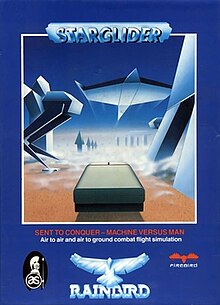
Shadow of the Beast is a platform game developed by Reflections and published by Psygnosis in 1989. The original version was released for the Amiga, and was later ported to many other systems. The game was known for its graphics, with many colours on screen and up to twelve levels of parallax scrolling backdrops, and for its atmospheric score composed by David Whittaker that used high-quality instrument samples.
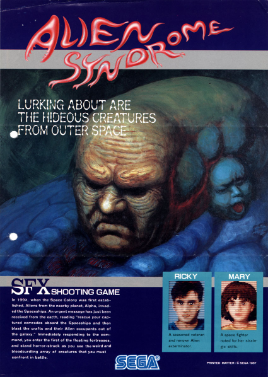
Alien Syndrome is a run and gun video game developed by Sega and released in arcades in 1987, and later ported to the Master System in 1988. The game utilizes a side-scrolling feature that allows the player to take control of either a male (Ricky) or female (Mary) soldier whilst hunting aliens and saving hostages before they run out of time.
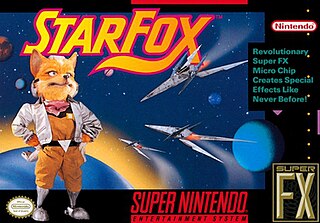
Star Fox, known as Starwing in PAL regions, is a rail shooter video game developed by Nintendo and Argonaut Software, and published by Nintendo for the Super Nintendo Entertainment System. The first entry in the Star Fox series, the story follows Fox McCloud and the rest of the Star Fox team defending their homeworld of Corneria against the invading forces of Andross.

Star Fox 2 is a rail shooter game developed by Nintendo and Argonaut Software and published by Nintendo. Developed for the Super Nintendo Entertainment System (SNES), it was completed in 1995 but did not see an official release until 2017 on the Super NES Classic Edition.
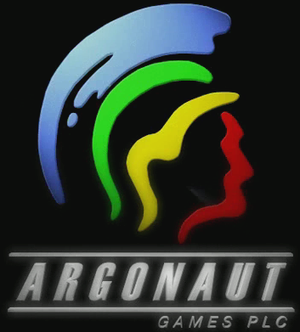
Argonaut Games PLC was a British video game developer founded in 1982. It was known for the Super NES video game Star Fox and its supporting Super FX chip, and for Croc: Legend of the Gobbos and the Starglider series. The company was liquidated in late 2004, and ceased to exist in early 2007.

The Super FX is a coprocessor on the Graphics Support Unit (GSU) added to select Super Nintendo Entertainment System (SNES) video game cartridges, primarily to facilitate advanced 2D and 3D graphics. The Super FX chip was designed by Argonaut Games, who also co-developed the 3D space rail shooter video game Star Fox with Nintendo to demonstrate the additional polygon rendering capabilities that the chip had introduced to the SNES.
Jeremy Elliott "Jez" San OBE is an English game programmer and entrepreneur who founded Argonaut Software as a teenager in the 1980s. He is best known for the 1986 Atari ST game Starglider and helping to design the Super FX chip used in Star Fox for the Super NES.
Telecomsoft was a British video game publisher and a division of British Telecom. The company was founded by Ederyn Williams in 1984 and operated three separate labels: Firebird, Rainbird, and Silverbird. The first employee was James Leavey, seconded from elsewhere in BT, who, along with Tony Rainbird, became the driving force behind the company in the early days.

Loopz is a puzzle video game designed and programmed by Ian Upton for the Atari ST in 1989. He previously worked as head game designer for Audiogenic, who acquired exclusive rights to the game, then in 1990 arranged for Mindscape to publish it for computers in North America and consoles worldwide.
1986 saw many sequels and prequels in video games, such as Super Mario Bros. 2, along with new titles such as Arkanoid, Bubble Bobble, Castlevania, Dragon Quest, Ikari Warriors, The Legend of Zelda, Metroid, Out Run and R.B.I. Baseball. The year's highest-grossing arcade video games were Hang-On in Japan, Hang-On and Gauntlet in the United States, and Nemesis (Gradius) in London. The year's best‑selling home system was the Nintendo Entertainment System (Famicom) for the third year in a row, while the year's best-selling home video games in Western markets were Super Mario Bros. in the United States and Yie Ar Kung-Fu in the United Kingdom.
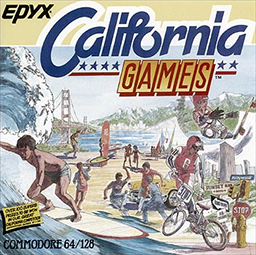
California Games is a 1987 sports video game originally released by Epyx for the Apple II and Commodore 64, and ported to other home computers and video game consoles. Branching from their Summer Games and Winter Games series, this game consists of a collection of outdoor sports purportedly popular in California. The game was successful and spawned a sequel, California Games II.
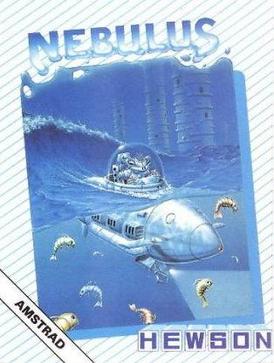
Nebulus is a platform game created by John M. Phillips and published by Hewson Consultants in the late 1980s for home computer systems. International releases and ports were known by various other names: Castelian, Kyorochan Land, Subline, and Tower Toppler.
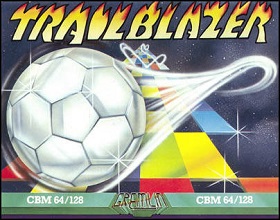
Trailblazer is a racing video game developed by Mr. Chip Software and published by Gremlin Graphics for the ZX Spectrum, Commodore 64, Atari 8-bit computers, Amstrad CPC, Commodore 16 and Plus/4 in 1986. It was ported to the Amiga and Atari ST.

Starglider 2 is a 3D space combat simulator published in 1988 by Rainbird as the sequel to 1986's Starglider. It was released for the Amiga, Atari ST, MS-DOS, Macintosh, and ZX Spectrum. Instead of the wireframe graphics of the original, Starglider 2 uses flat shaded polygons.

RoboCop 2 is a platform shooter video game based on the 1990 film of the same name. The game was released for several platforms, including Amiga, Amstrad GX4000, Atari ST, Commodore 64, Game Boy, Nintendo Entertainment System, and ZX Spectrum. Ocean Software developed and published several versions, and Data East manufactured an arcade version.

Cybernoid: The Fighting Machine is a shoot 'em up developed and published in 1988 by Hewson Consultants for the ZX Spectrum. It was ported to the Amstrad CPC, Atari ST, Commodore 64, Amiga, and Nintendo Entertainment System. It was programmed by Raffaele Cecco. The ZX Spectrum, Amstrad, and Atari ST versions have a main theme by Dave Rogers, while the Commodore C64 version has a different theme by Jeroen Tel.

X is a 1992 space combat simulation video game developed by Nintendo and Argonaut Software and published by Nintendo for the Game Boy in Japan. The player assumes the role of the VIXIV starship as it must protect the planet Tetamus II from a mysterious race of aliens. Gameplay involves completing missions assigned by the "Training Academy Coach", ranging from protecting bases from enemy fire or delivering cargo to a certain area.
David Lowe also known as "Uncle Art" is a British composer known for his work on computer games from 1985 to 1998.
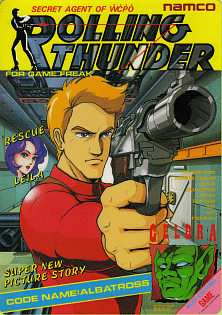
Rolling Thunder is a run and gun video game developed by Namco in Japan and Europe and released in 1986 as a coin-operated arcade video game using the Namco System 86 hardware. It was distributed in North America by Atari Games. The player takes control of a secret agent who must rescue his female partner from a terrorist organization. Rolling Thunder was a commercial success in arcades, and it was released for various home computer platforms in 1987 and the Nintendo Entertainment System in 1989. The original arcade game has been included in various classic game compilations as well. It influenced later arcade action franchises such as Shinobi and Time Crisis, which borrowed mechanics such as taking cover behind crates.
Giles Goddard is an English video game programmer. He was one of the first Western employees at Nintendo, programming the Mario face in Super Mario 64, and working on titles such as Star Fox, 1080° Snowboarding, and Steel Diver. In 2002, he founded Vitei, a video game developer based in Kyoto, Japan, and is CEO.
